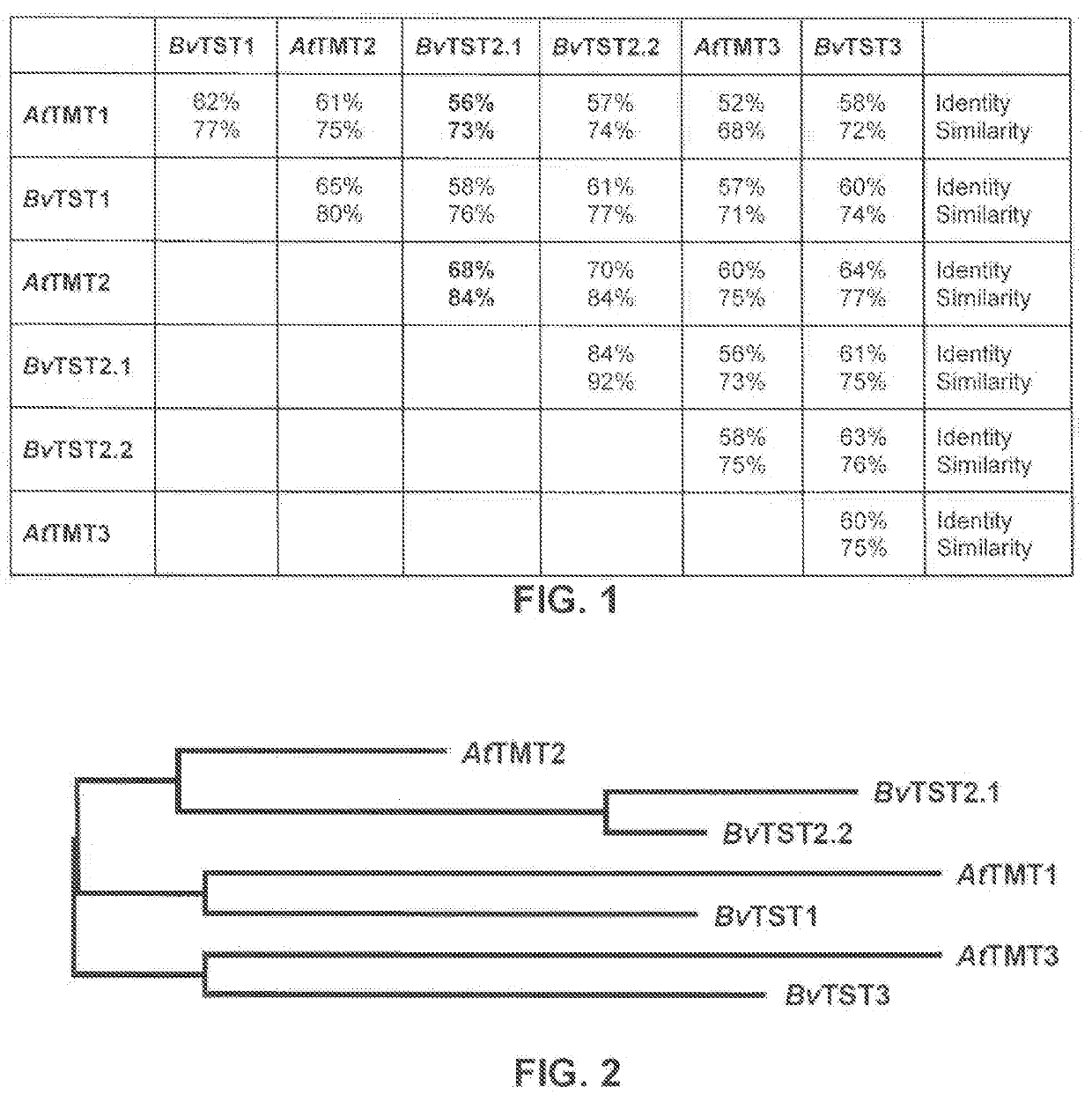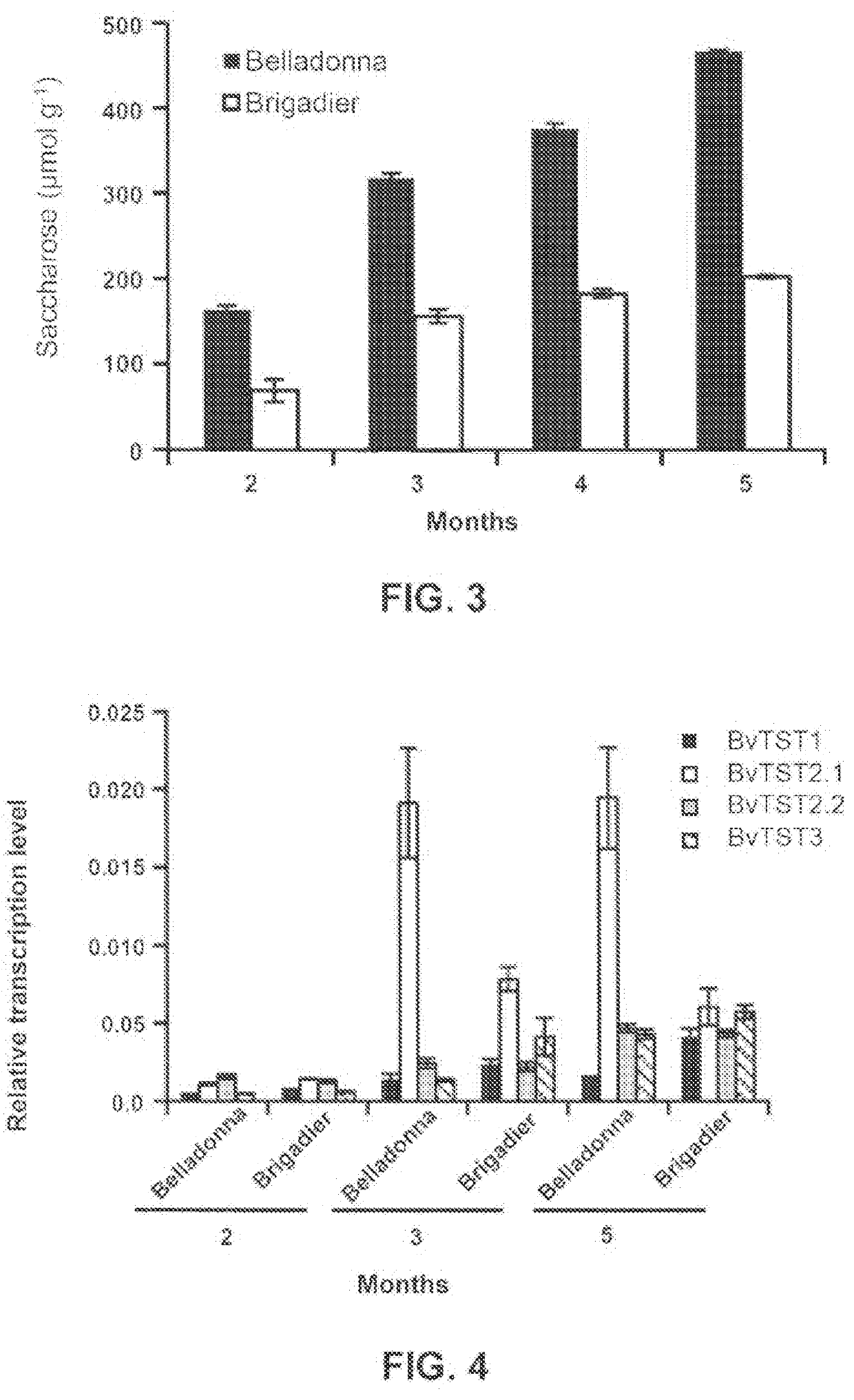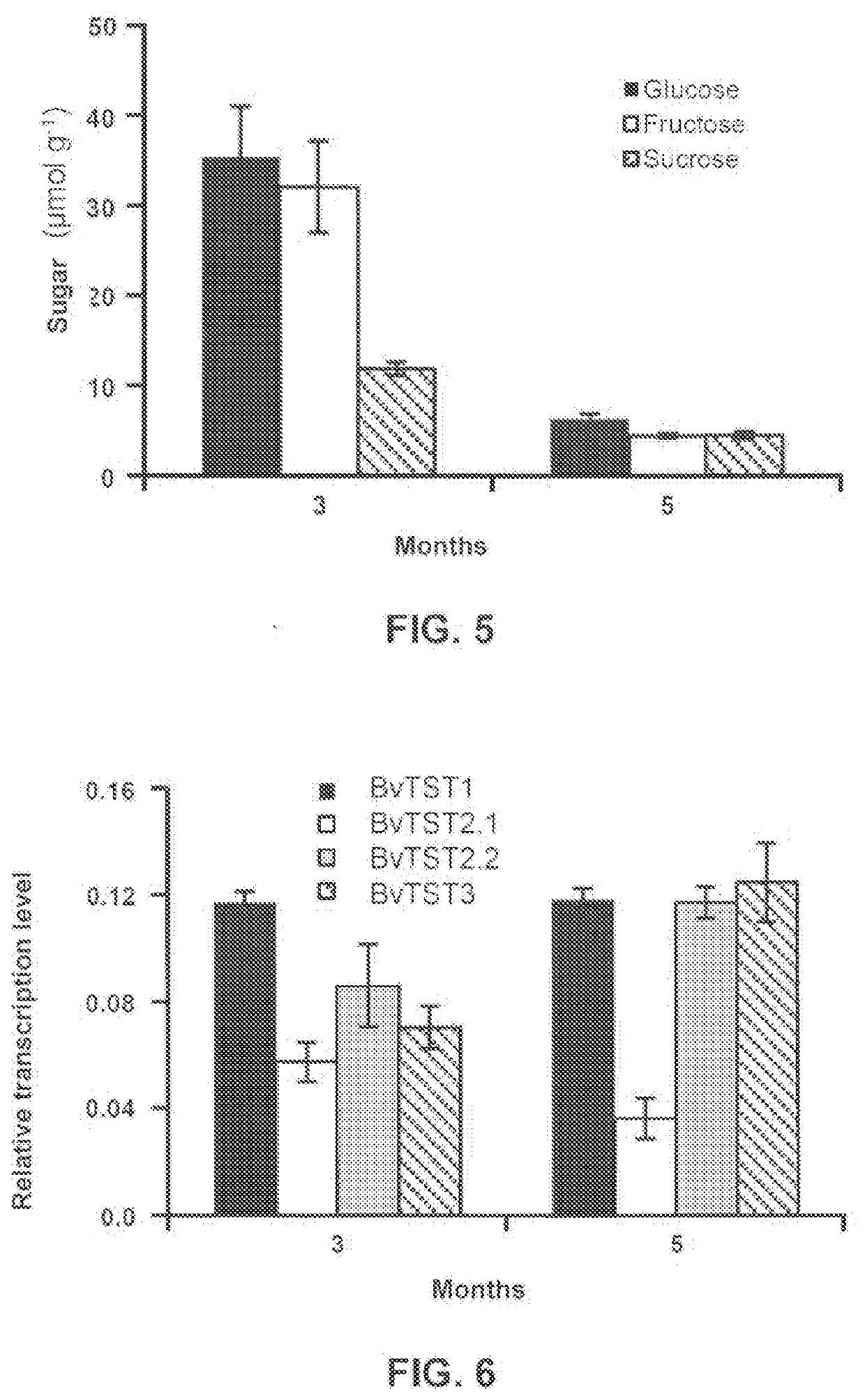Tonoplast proton/sugar antiporter proteins and the use thereof to increase the saccharose concentration in a saccharose storage organ of plants
a technology of tonoplast proton and sugar, which is applied in the field of industrial sugar production from crops, can solve the problems of unsatisfactory saccharose concentrations obtained, and achieve the effect of increasing the saccharose concentration
- Summary
- Abstract
- Description
- Claims
- Application Information
AI Technical Summary
Benefits of technology
Problems solved by technology
Method used
Image
Examples
example 1
erial and Growth Conditions
[0112]For the following experiments sugar beet varieties “Belladonna KWS” and “Brigadier” were used. The seeds of the variety “Belladonna KWS” were provided by KWS Saat AG, Einbeck, DE, the seeds for beet of the variety “Brigadier” were purchased in local seed businesses.
[0113]Furthermore, plants and plant cells of Nicotiana benthamiana and Arabidopsis thaliana were used. The plants grew in growth chambers on the standard substrate ED 73 of the company Einheitserde- and Humuswerke Gebr. Patzer GmbH & Co. KG at a light-dark cycle of 10 hours of light and 14 hours darkness, 22° C. and 125 μmol quanta m−2s−1.
[0114]The Arabidopsis Attst1-2 T-DNA double gene knockout mutant has been described in the prior art (Wormit, A. et al. (2006) “Molecular identification and physiological characterization of a novel monosaccharide transporter from Arabidopsis involved in vacuolar sugar transport” Plant Cell 18, 3476-3490). For growth experiments with 2-deoxyglucose surfac...
example 2
ive Determination of Sugars in Tissues of Sugar Beet
[0115]Taproot tissue of sugar beet was harvested with a vegetable slicer, immediately frozen in liquid nitrogen and stored until quantitative glucose testing at −80° C. For the determination of the sugar content, the plant tissue was ground in liquid nitrogen and 50 μg ground tissue was extracted twice for 20 minutes at 80° C. with 80% ethanol. The supernatants were combined and evaporated with a SpeedVac (Eppendorf, Hamburg, Germany). The dried sugars were dissolved in water and quantified by means of a NADP-coupled enzymatic assay in a microplate reader as described (Bergmeyer, H. U. and Bernt, E. (1974) “Methods of Enzymatic Analysis”, vol. 3, Bergmeyer, H. U. ed., Verlag Chemie New York, S. 1176-117; Lee, Y. C. (1972) “α-Mannosidase, β-glucosidase, and β-galactosidase from sweet almond emulsion” Methods Enzymol. 28: 699-702).
example 3
ession Analysis
[0116]The relative accumulation of mRNA was carried out by Northern blot analyses as described (Young, B. et al. (2011) “Arabidopsis nucleoside hydrolases involved in intracellular and extracellular degradation of purines”Plant J. 65: 703-711). Quantitative RT-PCR was performed as previously described (Leroch M. et al (2005) “Identification and characterization of a novel plastidic adenine nucleotide uniporter from Solanum tuberosum” J. Biol. Chem. 280: 17992-18000). The gene-specific primers that were used are listed in Table 1:
TABLE 1Gene-specific primers for the amplification of the nucleotide sequences encoding BvTST1and BVIST2.1, and for the quantitative PCR for expression analysis of the four paralogous TSTgenes from Beta vulgaris.SEQIDNameNucleotide sequenceNO:BvTSTI GWfwGGGGACAAGTTTGTACAAAAAAGCA 15GGCTTAATGAAGGGTGCTGTGCTTBvTSTIGW revGGGGACCACTTTGTACAAGAAAGC 16TGGGTACTCCGCCTTAGCGGCTTCBvTST2.1fw_XholCTCGAGATGAGTGCAGCAGTATTAG17BvTST2.1rev_XbalTCTAGAGTGGCTTGCTTGTC...
PUM
| Property | Measurement | Unit |
|---|---|---|
| Fraction | aaaaa | aaaaa |
| Fraction | aaaaa | aaaaa |
| Fraction | aaaaa | aaaaa |
Abstract
Description
Claims
Application Information
 Login to View More
Login to View More - R&D
- Intellectual Property
- Life Sciences
- Materials
- Tech Scout
- Unparalleled Data Quality
- Higher Quality Content
- 60% Fewer Hallucinations
Browse by: Latest US Patents, China's latest patents, Technical Efficacy Thesaurus, Application Domain, Technology Topic, Popular Technical Reports.
© 2025 PatSnap. All rights reserved.Legal|Privacy policy|Modern Slavery Act Transparency Statement|Sitemap|About US| Contact US: help@patsnap.com



